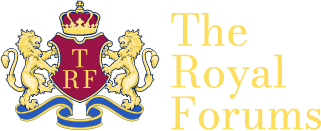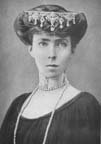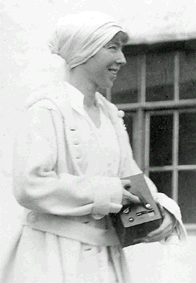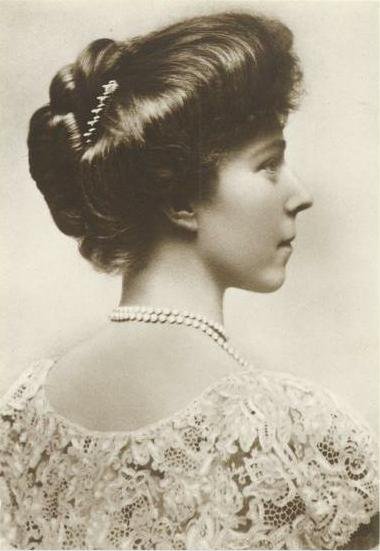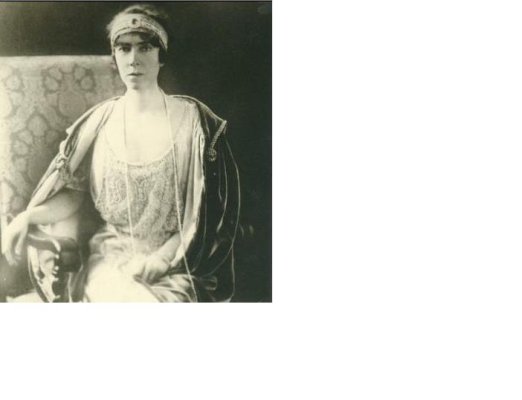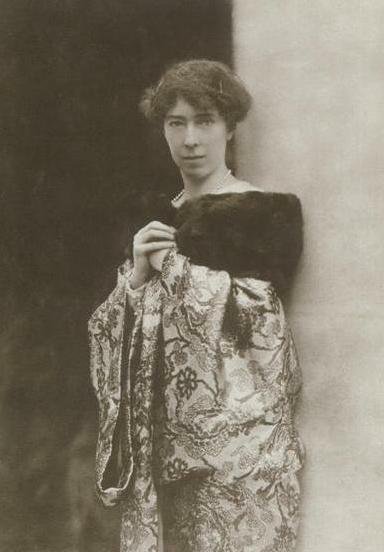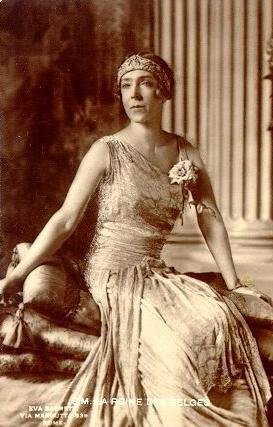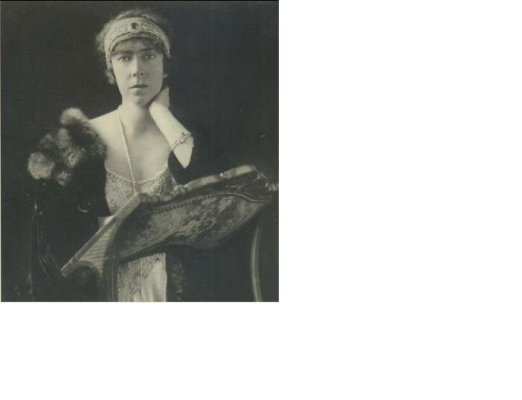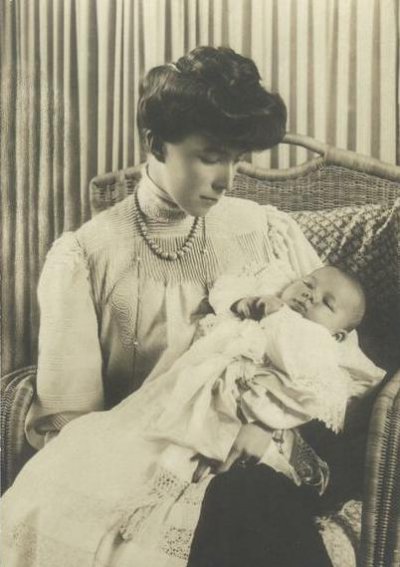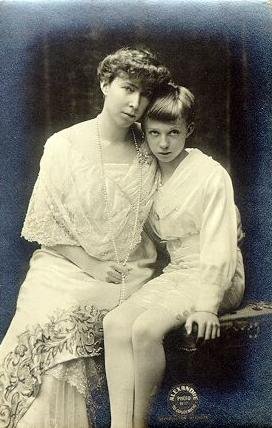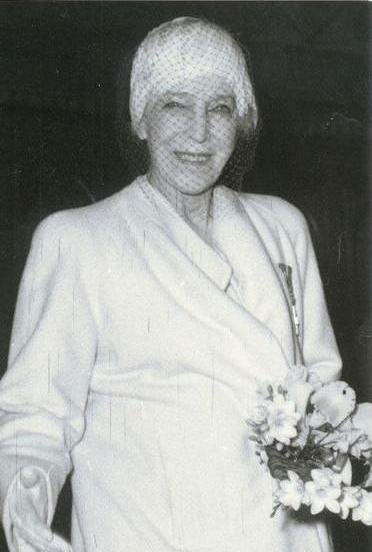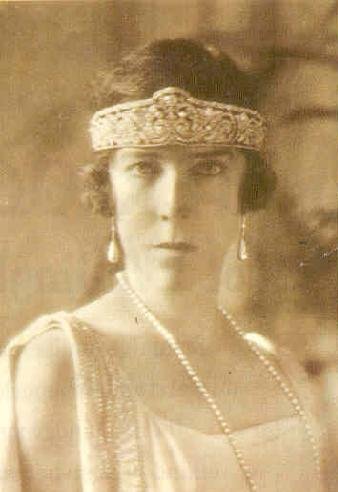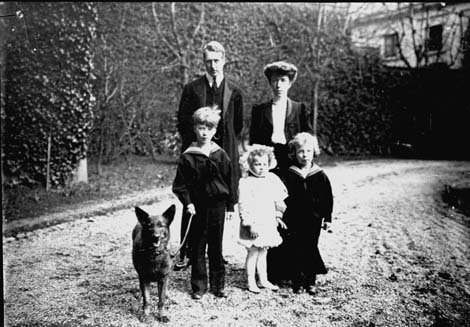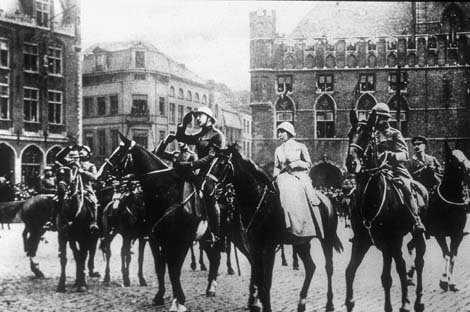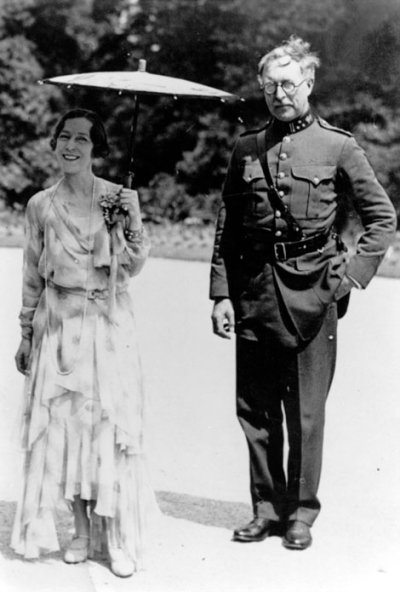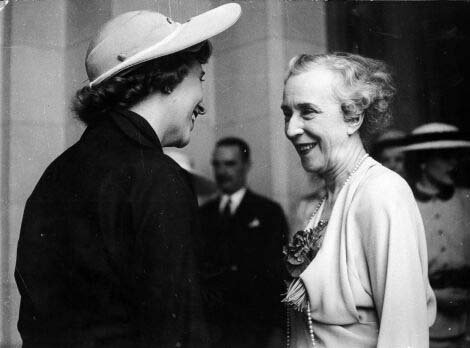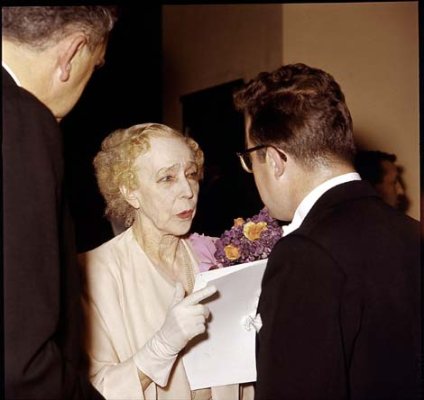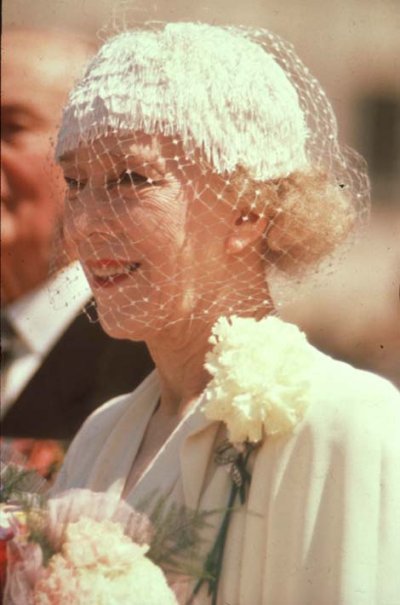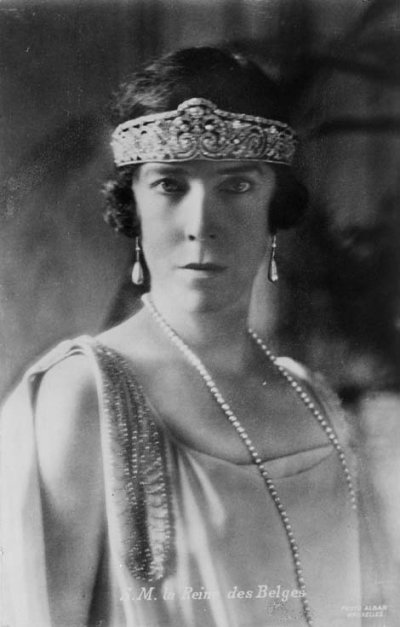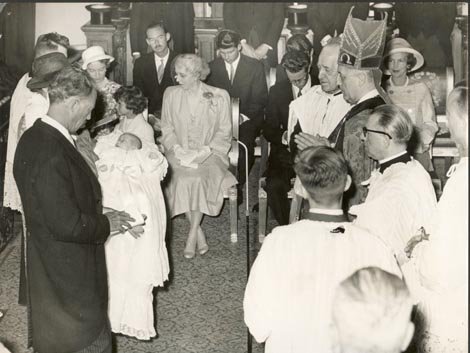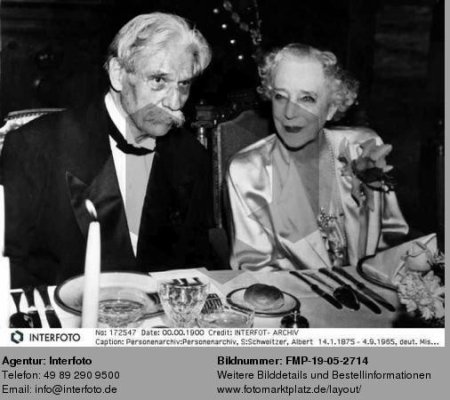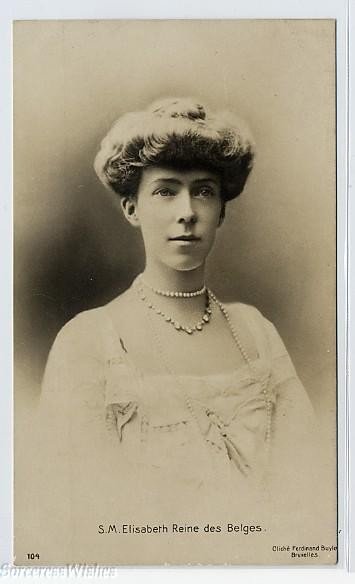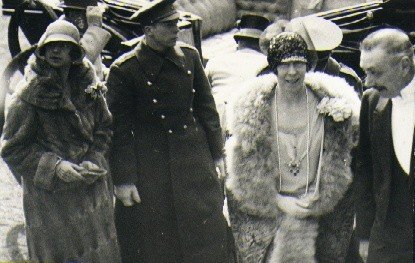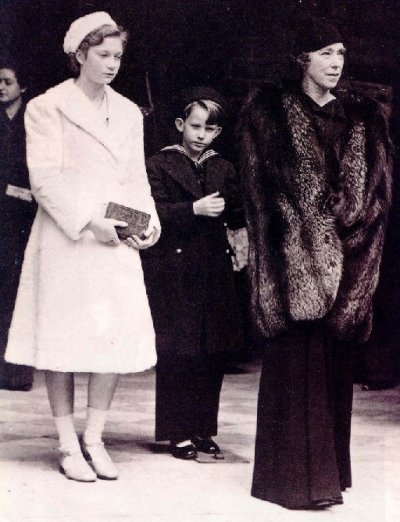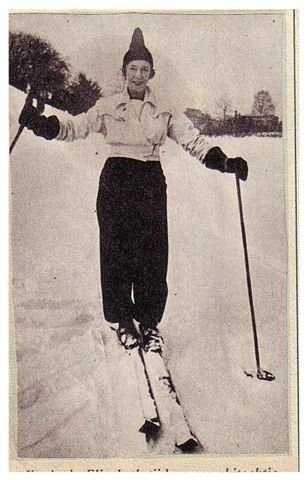The Red Queen
Elisabeth of the Belgians (1876-1965)By Art Beéche
At Possenhofen castle, drenched by the waters of Lake Starnberg, a little princess was born on July 25, 1876. Her name was Elisabeth, her country was Bavaria, her future was Belgium. A member of the illustrious House of Wittelsbach, she was given the name of her most famous, and romantically well remembered aunt, Elisabeth in Bavaria, Empress of Austria, commonly known as "Sissi." At the time of the little princess' birth, some twenty-odd monarchs ruled over Germany. Some of these rulers were of consequence, others functioned more like little operetta monarchs in small principalities.
Above the German monarchs the House of Hohenzollern ruled supreme in the person of Kaiser Wilhelm I, the recently crowned emperor of a new Germany. In Bavaria, the little princess' cousins wildly spent the country's revenues building the legacy for which the country is known. Indeed, the romantic castles built by King Ludwig II of Bavaria remain the country's most recognizable attraction.
The father of Duchess Elisabeth was Karl-Theodor, Duke in Bavaria, an ophthalmologist of recognized reputation. Her mother was the Infanta Maria-Josepha of Portugal, daughter of exiled King Miguel I of Portugal. Maria-Josepha was the sister of Maria Theresa of Portugal, third wife of Archduke Karl-Ludwig of Habsburg and stepmother of Emperor Karl I, of Maria-Anne of Portugal, wife of Grand Duke William of Luxembourg, and of Maria-Antonia of Portugal, second wife of Duke Robert I of Bourbon-Parma and mother of Zita, wife of Emperor Karl I. An artist himself, Duke Karl-Theodor cultivated the artistic tastes of his family, and Elisabeth was raised with a deep love for painting, music and sculpture. At her father's clinic, Elisabeth learned to cope with human suffering.
Duchess Elisabeth met her future husband under sad circumstances. Her aunt, Sophie-Charlotte in Bavaria had married the Prince Ferdinand of Bourbon-Orleans, Duke d'Alencon. On May 4, 1897, the Duchess d'Alencon met with a terrible and untimely death during the fire that consumed the Charity Bazaar in Paris. At the funeral for this tragically deceased woman, Elisabeth met Prince Albert of Belgium. At the time that Albert and Elisabeth met, Prince Albert was the heir to his uncle King Leopold II of the Belgians. Albert was the second son of Prince Philippe, Count of Flanders, and Princess Marie of Hohenzollern-Sigmaringen, a sister of King Carol I of Romania. At birth, Albert occupied the third place in the line of succession behind his father and elder brother, Prince Baudouin. The unexpected death of Baudouin in January of 1891 immediately raised Albert to prominence within his country. A studious, quiet man, Albert was not the choice of heir that King Leopold II would have relished. As the only male member of his generation, Albert was guaranteed the crown of the Belgians upon the king's death. Albert had two sisters who survived into adulthood, Princess Henriette who married Prince Emmanuel of Orleans, and Princess Josephine who married her cousin Prince Karl-Anton of Hohenzollern-Sigmaringen, brother of King Ferdinand I of Romania.
Seduced by the intense looks of the gracious and slender Bavarian princess, Albert asked her to marry him not long after. The wedding took place on October 2, 1900. A little over a year later, on November 3, 1901, their happy marriage was crowned with the birth of a little prince, the future King Leopold III of the Belgians. Two more children would join the royal nursery in Brussels, Charles on 10 October 1903 , and Marie-Jose on 4 August 1906. This young princess would eventually become the last queen of Italy. The pleasurable and tranquil life of Albert and Elisabeth came to an end on 17 December 1909. On this date old King Leopold II of the Belgians died without a male heir. The Belgian crown was inherited by his nephew, who ascended the throne as Albert I, King of the Belgians.
At the beginning of the First World War, the German armies invaded Belgium, violating the country's neutrality. The Belgian royal couple refused to abandon their subjects and stayed on while the country's valiant, although futile, effort tried to resist the German onslaught. Elisabeth, using the medical knowledge she had acquired at her father's clinic, opened a field hospital where she served as a nurse. During these terrible times, Elisabeth lifted the spirits of wounded soldiers by given each one a floral arrangement during a lonely Christmas. Her sensible soul had understood that at certain times, small details gained essential importance. On 11 November 1918 Belgium was liberated. Riding next to her husband, now known as the Cavalier King, Elisabeth joined the parades to receive the ovations of the Belgian populace.
The end of the Great War also meant the beginning of a very happy period in Elisabeth's life. She could indulge in her passion for the arts. The royal couple gained worldwide recognition for their valiant defense of Belgium. Foreign travels became commonplace, and everywhere they went, Albert and Elisabeth were received as heroes.
On 17 February 1934, King Albert I met with death unexpectedly. During a solitary mountaineering trip, Albert fell to his death in the mountains of Marche-les-Dames. Elisabeth received the tragic news at Laeken Palace and in a show of internal fortitude, the Queen did not loose her composure. The magnitude of Albert's death would hit her days after the royal funeral.
History seemed to repeat itself in 1940. King Leopold III, Albert and Elisabeth's eldest son, was faced during hectic moments with the onslaught of the Nazi armies. Belgium was invaded and quickly overtaken by the advancing German armies. During the Second World war, Elisabeth of Belgium found solace in her music and charitable organizations.
Upon Belgium's liberation, Elisabeth once again dedicated herself to the artistic development and restoration of her devastated country. She created schools, artistic competitions and met with the greatest talents of her time. In fact, in 1958 Elisabeth became the first royalty received at the Kremlin. "I love to travel and meet people from all over the world," declared the Queen Mother of Belgium. "I love art in all its forms, I love seeing the world by myself, especially when that world is in the East." Three years later she paid a visit to China against the reservations of her grandson King Baudouin who said: "Grandmother....you are going to bother quite a few people...I know, said the Queen, but good thinkers of this country are not going to forgive me for this. Yet, thanks to the Lord those people are fewer and fewer every day."
On 23 November 1965, as rain shrouded the skyline of Brussels, at Stuyvenberg Palace a Queen was dying. The Belgium royal family, royalties from around the continent, artists and the people of Belgium in general lamented the loss of a great woman. No other person best summarized Queen Elisabeth's life than her friend Jean Cocteau: "There was in Belgium a modest queen of small frame and large soul who always said...I'm but an artist...and in her modesty as an artist Elisabeth said...I'm just a queen."
From: European Royal History
Elisabeth of the Belgians (1876-1965)By Art Beéche
At Possenhofen castle, drenched by the waters of Lake Starnberg, a little princess was born on July 25, 1876. Her name was Elisabeth, her country was Bavaria, her future was Belgium. A member of the illustrious House of Wittelsbach, she was given the name of her most famous, and romantically well remembered aunt, Elisabeth in Bavaria, Empress of Austria, commonly known as "Sissi." At the time of the little princess' birth, some twenty-odd monarchs ruled over Germany. Some of these rulers were of consequence, others functioned more like little operetta monarchs in small principalities.
Above the German monarchs the House of Hohenzollern ruled supreme in the person of Kaiser Wilhelm I, the recently crowned emperor of a new Germany. In Bavaria, the little princess' cousins wildly spent the country's revenues building the legacy for which the country is known. Indeed, the romantic castles built by King Ludwig II of Bavaria remain the country's most recognizable attraction.
The father of Duchess Elisabeth was Karl-Theodor, Duke in Bavaria, an ophthalmologist of recognized reputation. Her mother was the Infanta Maria-Josepha of Portugal, daughter of exiled King Miguel I of Portugal. Maria-Josepha was the sister of Maria Theresa of Portugal, third wife of Archduke Karl-Ludwig of Habsburg and stepmother of Emperor Karl I, of Maria-Anne of Portugal, wife of Grand Duke William of Luxembourg, and of Maria-Antonia of Portugal, second wife of Duke Robert I of Bourbon-Parma and mother of Zita, wife of Emperor Karl I. An artist himself, Duke Karl-Theodor cultivated the artistic tastes of his family, and Elisabeth was raised with a deep love for painting, music and sculpture. At her father's clinic, Elisabeth learned to cope with human suffering.
Duchess Elisabeth met her future husband under sad circumstances. Her aunt, Sophie-Charlotte in Bavaria had married the Prince Ferdinand of Bourbon-Orleans, Duke d'Alencon. On May 4, 1897, the Duchess d'Alencon met with a terrible and untimely death during the fire that consumed the Charity Bazaar in Paris. At the funeral for this tragically deceased woman, Elisabeth met Prince Albert of Belgium. At the time that Albert and Elisabeth met, Prince Albert was the heir to his uncle King Leopold II of the Belgians. Albert was the second son of Prince Philippe, Count of Flanders, and Princess Marie of Hohenzollern-Sigmaringen, a sister of King Carol I of Romania. At birth, Albert occupied the third place in the line of succession behind his father and elder brother, Prince Baudouin. The unexpected death of Baudouin in January of 1891 immediately raised Albert to prominence within his country. A studious, quiet man, Albert was not the choice of heir that King Leopold II would have relished. As the only male member of his generation, Albert was guaranteed the crown of the Belgians upon the king's death. Albert had two sisters who survived into adulthood, Princess Henriette who married Prince Emmanuel of Orleans, and Princess Josephine who married her cousin Prince Karl-Anton of Hohenzollern-Sigmaringen, brother of King Ferdinand I of Romania.
Seduced by the intense looks of the gracious and slender Bavarian princess, Albert asked her to marry him not long after. The wedding took place on October 2, 1900. A little over a year later, on November 3, 1901, their happy marriage was crowned with the birth of a little prince, the future King Leopold III of the Belgians. Two more children would join the royal nursery in Brussels, Charles on 10 October 1903 , and Marie-Jose on 4 August 1906. This young princess would eventually become the last queen of Italy. The pleasurable and tranquil life of Albert and Elisabeth came to an end on 17 December 1909. On this date old King Leopold II of the Belgians died without a male heir. The Belgian crown was inherited by his nephew, who ascended the throne as Albert I, King of the Belgians.
At the beginning of the First World War, the German armies invaded Belgium, violating the country's neutrality. The Belgian royal couple refused to abandon their subjects and stayed on while the country's valiant, although futile, effort tried to resist the German onslaught. Elisabeth, using the medical knowledge she had acquired at her father's clinic, opened a field hospital where she served as a nurse. During these terrible times, Elisabeth lifted the spirits of wounded soldiers by given each one a floral arrangement during a lonely Christmas. Her sensible soul had understood that at certain times, small details gained essential importance. On 11 November 1918 Belgium was liberated. Riding next to her husband, now known as the Cavalier King, Elisabeth joined the parades to receive the ovations of the Belgian populace.
The end of the Great War also meant the beginning of a very happy period in Elisabeth's life. She could indulge in her passion for the arts. The royal couple gained worldwide recognition for their valiant defense of Belgium. Foreign travels became commonplace, and everywhere they went, Albert and Elisabeth were received as heroes.
On 17 February 1934, King Albert I met with death unexpectedly. During a solitary mountaineering trip, Albert fell to his death in the mountains of Marche-les-Dames. Elisabeth received the tragic news at Laeken Palace and in a show of internal fortitude, the Queen did not loose her composure. The magnitude of Albert's death would hit her days after the royal funeral.
History seemed to repeat itself in 1940. King Leopold III, Albert and Elisabeth's eldest son, was faced during hectic moments with the onslaught of the Nazi armies. Belgium was invaded and quickly overtaken by the advancing German armies. During the Second World war, Elisabeth of Belgium found solace in her music and charitable organizations.
Upon Belgium's liberation, Elisabeth once again dedicated herself to the artistic development and restoration of her devastated country. She created schools, artistic competitions and met with the greatest talents of her time. In fact, in 1958 Elisabeth became the first royalty received at the Kremlin. "I love to travel and meet people from all over the world," declared the Queen Mother of Belgium. "I love art in all its forms, I love seeing the world by myself, especially when that world is in the East." Three years later she paid a visit to China against the reservations of her grandson King Baudouin who said: "Grandmother....you are going to bother quite a few people...I know, said the Queen, but good thinkers of this country are not going to forgive me for this. Yet, thanks to the Lord those people are fewer and fewer every day."
On 23 November 1965, as rain shrouded the skyline of Brussels, at Stuyvenberg Palace a Queen was dying. The Belgium royal family, royalties from around the continent, artists and the people of Belgium in general lamented the loss of a great woman. No other person best summarized Queen Elisabeth's life than her friend Jean Cocteau: "There was in Belgium a modest queen of small frame and large soul who always said...I'm but an artist...and in her modesty as an artist Elisabeth said...I'm just a queen."
From: European Royal History
